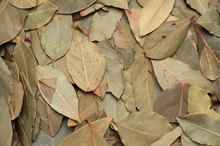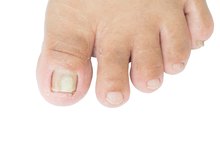How to Kill Maggots In an Open Wound
It may sound strange and even a little disgusting, but doctors have used maggots to stop the spreading of necrotic flesh in wounds, kill harmful bacteria and even promote the growth of new skin. On the other hand, from time to time, your pet may contract myiasis, which is an infection of fly larvae, in a wound 1. Even if the use of maggots does promote healing, you will need to clean the fly larvae from the wound to keep an animal healthy 1.
Rinse the wound with warm, soapy water 1. This will wash away a number of the maggots on the surface.
Tea Tree Oil and Camphor for Nail Fungus
Learn More
Pour a cap full of hydrogen peroxide over the wound and allow it to work into the infection 1. This will also help kill many of the maggots that are on the surface of the wound 1.
Apply a dusting of cornstarch to the wound to smother any maggots the remain on the surface, and inspect further to determine if the maggots have gone deeper into the wound 1.
What Are the Health Benefits of Bay Leaves?
Learn More
Soak a gauze bandage in turpentine oil.
Apply the gauze soaked bandage to the open wound 1. This will draw out and kill maggots that have burrowed deeply into the wound, as well as any maggots on the surface 1.
Keep the turpentine-soaked bandage on the wound for up to 1 hour, inspecting it from time to time 1.
Gently wipe away dead maggots that have worked to the surface of the wound 1. Use a pair of tweezers to remove maggots that do not wipe clean.
Apply a second turpentine-oil-soaked gauze bandage to draw out any remaining maggots that are deep in the wound 1.
Tips
In the event that your animal has suffered a life-threatening wound that is infected with maggots, seek the advice and care of your veterinarian for further assistance.
Warnings
Maggot therapy is a relatively old method, but it should be experimented with only under the care of a licensed medical professional. Some maggots carry harmful bacteria that may promote sickness and infection.
Related Articles
References
Tips
- In the event that your animal has suffered a life-threatening wound that is infected with maggots, seek the advice and care of your veterinarian for further assistance.
Warnings
- Maggot therapy is a relatively old method, but it should be experimented with only under the care of a licensed medical professional. Some maggots carry harmful bacteria that may promote sickness and infection.
Writer Bio
Jennifer Hudock is an author, editor and freelancer from Pennsylvania. She has upcoming work appearing in two Library of the Living Dead Press anthologies and has been published in numerous print and online journals, including eMuse, Real TV Addict and Strange Horizons. She has a Bachelor of Arts in English/creative writing from Bloomsburg University.








